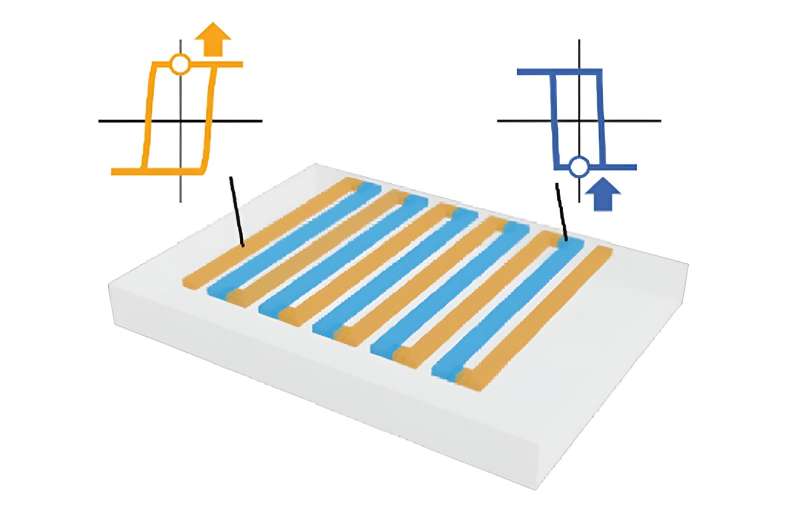This article has been reviewed according to Science X's editorial process and policies. Editors have highlighted the following attributes while ensuring the content's credibility:
fact-checked
peer-reviewed publication
trusted source
proofread
Potential use of topological magnets for magneto-thermoelectric energy conversion

In the pursuit of efficient energy utilization, scientists are looking into thermoelectric materials that can efficiently turn heat into electricity. One specific type, called topological magnets, is getting a lot of attention because they exhibit the anomalous Nernst effect. In the anomalous Nernst effect, a voltage is generated perpendicular to both the temperature gradient and an applied magnetic field in a ferromagnetic material.
While some devices have shown improved performance by combining layers with different thermopower signs in thermopile devices, this approach generally requires the use of different materials and altering the manufacturing process.
In a significant breakthrough, a collaborative research group has demonstrated the ability to create both positive and negative polarities in generating electricity from heat using a special material called Co3Sn2S2, known for its topological magnet properties. This breakthrough was achieved by simply swapping out some elements in the magnetic compound.
The group was led by Associate Professor Kohei Fujiwara and Professor Atsushi Tsukazaki from Tohoku University's Institute for Materials Research (IMR); Researcher Takamasa Hirai and Distinguished Group Leader Ken-ichi Uchida from the National Institute for Materials Science (NIMS); and Associate Professor Yuki Yanagi from Toyama Prefectural University.
Details of their findings were reported in the journal Nature Physics on January 8, 2024.
"We focused on a cobalt-tin-sulfur-based ferromagnet because its topological electronic state is suited to control the polarity of the anomalous Nernst effect according to our previous theoretical study," stated Fujiwara.
To validate their concept, the team conducted elemental substitution through the growth processes of the thin films, a technique widely employed in semiconductor technology. They discovered that the appropriate substitution of nickel and indium led to a reversal in the sign of thermoelectric voltage through the modulation of the topological electronic state.
"The availability of common base elements for the fabrication of thermopile devices will contribute to the reduction of resources and costs. Our concept will apply to other topological magnets and accelerate the development of superior magneto-thermoelectric materials," adds Fujiwara.
More information: Shun Noguchi et al, Bipolarity of large anomalous Nernst effect in Weyl magnet-based alloy films, Nature Physics (2024). DOI: 10.1038/s41567-023-02293-z
Journal information: Nature Physics
Provided by Tohoku University




















